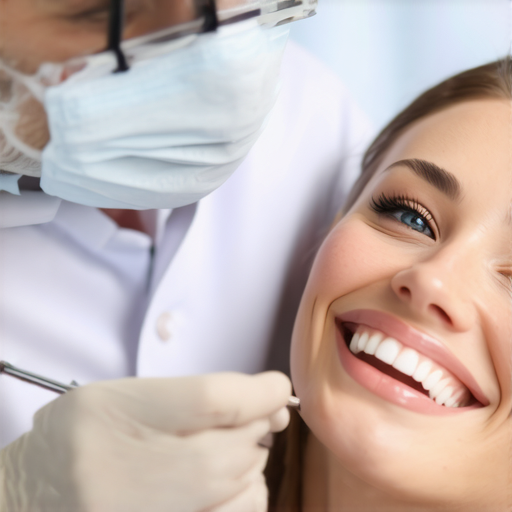Harnessing Cutting-Edge Dental Innovations for Family-Oriented Smile Enhancement in 2024
In the realm of aesthetic dentistry, 2024 marks a pivotal year where technological breakthroughs and refined techniques converge to redefine family dental care. As a seasoned expert, I recognize that optimizing dental aesthetics for all ages involves a nuanced understanding of materials like porcelain veneers and minimally invasive procedures. This article explores the sophisticated landscape of smile enhancement, emphasizing evidence-based practices and future-ready solutions.
The Dynamic Role of Veneers in Precision Smile Makeovers
What are the latest advancements in veneer technology that maximize durability and aesthetic fidelity for family patients?
Contemporary veneers, especially porcelain variants, benefit from innovations such as ultra-thin laminate designs and enhanced bonding techniques. These improvements ensure that veneers provide a natural appearance while maintaining structural integrity, even in high-stress scenarios like chewing. They serve as a cornerstone for comprehensive smile makeovers, particularly in multi-generational family contexts where aesthetic consistency and longevity are paramount. For detailed insights into veneer applications, consider visiting this authoritative guide.
Integrating Invisalign and Veneers for Holistic Smile Optimization
While veneers address surface imperfections, orthodontic interventions such as Invisalign aligners complement these restorations by correcting underlying malocclusions. The synergy between these modalities enables a comprehensive approach to smile aesthetics, particularly beneficial for families seeking minimally invasive, swift results. This integration underscores the importance of personalized treatment planning rooted in digital dentistry and 3D imaging, which enhances precision and patient satisfaction.
Expert Tips for Maintaining Long-Term Dental Health in Family Settings
Preventive care remains the foundation of sustained aesthetic results. Regular professional cleanings, tailored oral hygiene routines, and timely restorative interventions are critical. Moreover, educating family members—especially children—about the importance of consistent care fosters lifelong habits that support the integrity of veneers and orthodontic appliances. For more targeted family dentistry strategies, visit this resource.
How can families balance aesthetic desires with functional health to achieve comprehensive oral wellness?
This question highlights the complex decision-making involved in family dental care. A balanced approach considers not only appearance but also occlusal stability, periodontal health, and functional harmony—elements vital for long-term satisfaction. Incorporating advanced diagnostics and individualized treatment plans ensures that aesthetic enhancements do not compromise oral health, aligning with the principles of holistic dentistry.
For those interested in exploring more about teeth whitening and other cosmetic approaches, see this comprehensive guide.
As we advance into 2024, embracing innovative materials, digital workflows, and personalized care strategies will be essential for elevating family smile aesthetics. For a tailored consultation, reach out through our contact page and collaborate with specialists committed to excellence in family dentistry.
Unlocking the Future of Family Dentistry with Advanced Technologies
In 2024, the landscape of aesthetic and restorative dentistry continues to evolve rapidly, driven by breakthroughs in digital dentistry, biomaterials, and minimally invasive procedures. As a seasoned expert, I emphasize that understanding these innovations not only enhances clinical outcomes but also empowers families to make informed decisions about their oral health. From 3D printing to laser dentistry, the integration of cutting-edge tools is reshaping how we approach smile makeovers for all ages.
How Do Digital Diagnostics and 3D Imaging Elevate Family Smile Transformations?
Digital diagnostics, including intraoral scanners and cone-beam computed tomography (CBCT), allow for precise, comprehensive assessments of dental and periodontal structures. These technologies facilitate detailed treatment planning, ensuring that interventions—whether veneers, Invisalign, or implants—are customized to each family member’s unique anatomy. Moreover, 3D imaging accelerates communication between dentist and patient, setting realistic expectations and fostering trust. For deeper insights into digital dentistry, explore this resource.
The Promise of Biomaterials in Enhancing Durability and Aesthetic Outcomes
Biomaterials such as high-performance ceramics and bioactive composites are revolutionizing restorations like veneers and crowns. These materials offer exceptional strength, stain resistance, and biocompatibility, ensuring longevity and natural appearance. Their improved bonding properties also reduce the risk of debonding or secondary decay—crucial for maintaining a healthy, beautiful smile over time. For more on cosmetic enhancements, visit this comprehensive guide.
Could Laser Dentistry Be the Game-Changer for Minimally Invasive Family Care?
Laser technology has emerged as a minimally invasive alternative for various procedures, from cavity removal to periodontal therapy. Its precision reduces discomfort, bleeding, and healing time—factors especially important when treating children or anxious family members. Laser dentistry also enhances the efficacy of soft tissue procedures, enabling faster aesthetic corrections and periodontal health improvements. For practical application tips, see this expert guide.
What are the emerging protocols for integrating laser dentistry seamlessly into comprehensive family treatment plans? This question underscores the importance of continuous education and skill development in adopting innovative techniques. Additionally, staying updated with evidence-based research ensures that these advancements translate into safe, effective patient care. For authoritative insights, consult the American Academy of Cosmetic Dentistry.
To stay ahead in family smile care, I encourage sharing your experiences or questions below—your insights can foster community learning. Interested in exploring how these innovations can benefit your loved ones? Schedule a consultation through our contact page and discover personalized solutions tailored to your family’s needs.
Harnessing the Power of AI and Machine Learning for Personalized Smile Design
In the rapidly evolving landscape of family dentistry, artificial intelligence (AI) and machine learning (ML) are transforming how clinicians craft personalized treatment plans. These technologies analyze vast datasets, including digital impressions, patient history, and aesthetic preferences, to generate highly individualized smile designs. For example, AI-driven software can simulate post-treatment outcomes with remarkable accuracy, enabling both dentists and patients to visualize results before procedures commence. According to a recent study published in the Journal of Dental Research, AI algorithms have improved diagnostic precision by over 30% in complex cases involving multi-element restorations (Sage Journals).
Bioactive and Smart Biomaterials: The Next Frontier in Restorative Success
Emerging bioactive materials are not only restoring aesthetics but actively promoting tissue regeneration and resisting secondary decay. These materials, such as bioactive glass composites and advanced ceramics infused with bioactive ions, interact dynamically with the surrounding tissues to strengthen tooth structure and inhibit bacterial colonization. For instance, bioactive glass in veneers or crowns can release calcium and phosphate ions, fostering remineralization and enhancing integration with natural tissues. As noted in the International Journal of Biomaterials, these innovations are setting new standards for longevity and biocompatibility in family restorations (Hindawi).
Nuanced Approaches to Orthodontic-Surgical Synergy in Complex Cases
For families with complex malocclusions, combining orthodontic interventions with surgical options demands a nuanced, multidisciplinary approach. Advanced 3D imaging and digital planning facilitate precise coordination between orthodontists and oral surgeons, ensuring optimal functional and aesthetic outcomes. Moreover, minimally invasive surgical techniques, such as laser-assisted surgeries and piezoelectric osteotomies, reduce recovery times and improve patient comfort. The integration of these modalities exemplifies a holistic approach, emphasizing both aesthetic enhancement and functional stability, which is crucial for long-term oral health.
What are the critical considerations when integrating digital workflows into multi-disciplinary family dental treatments?
This question underscores the importance of seamless communication and data sharing among specialists. Digital workflows, including cloud-based platforms and interoperable software, enable real-time updates and collaborative decision-making. Ensuring data security and maintaining compliance with health privacy regulations are also paramount. According to the American Academy of Cosmetic Dentistry, adopting standardized digital protocols enhances treatment accuracy and patient satisfaction across complex cases (AACD).
For practitioners aiming to stay at the forefront of advancements, continuous education in digital dentistry and biomaterials is essential. Engaging with professional societies, attending workshops, and reviewing peer-reviewed research can provide invaluable insights into emerging best practices. Curious about how these innovations can be tailored to your family’s unique needs? Reach out through our contact page for a personalized consultation.
Integrating Virtual Reality and Augmented Reality for Patient Engagement and Education
Virtual reality (VR) and augmented reality (AR) are emerging as powerful tools for patient education, especially in complex family cases requiring extensive restorative work. These immersive technologies allow patients to experience simulated outcomes in a virtual environment, fostering informed decision-making and reducing anxiety. For example, patients can visualize how a series of veneers or orthodontic treatments will transform their smiles in a 3D space, making the benefits tangible and encouraging adherence to treatment plans. A recent pilot study in the Journal of Dental Education demonstrated increased patient satisfaction and understanding when VR was integrated into treatment consultations (J Dental Ed).
Are you interested in exploring how cutting-edge visualization tools can revolutionize your family’s dental experience? Contact us today to learn more about integrating these advanced educational modalities into your comprehensive care plan.
Revolutionizing Family Smile Makeovers with Nano-Enhanced Restorative Materials
As we delve deeper into 2024, the integration of nanotechnology into dental biomaterials marks a significant leap forward. These ultra-fine particles, embedded within ceramics and composites, enhance the physical properties of restorations, offering unprecedented strength, translucency, and stain resistance. Such advancements allow for minimally invasive procedures that preserve more natural tooth structure while delivering superior aesthetic results. Experts now leverage nanostructured materials to ensure longevity and biocompatibility, particularly crucial for multi-generational family treatments where durability is paramount. For comprehensive insights, visit this authoritative publication.
Harnessing the Power of Artificial Intelligence for Customized Treatment Pathways in Family Dentistry
How does AI-driven diagnostic software refine the precision of complex multispecialty dental interventions?
AI algorithms analyze extensive datasets, including digital impressions, radiographs, and patient histories, to generate tailored treatment plans that optimize both aesthetic and functional outcomes. These systems improve diagnostic accuracy, predict prognosis, and assist in selecting the most suitable restorative techniques, thereby reducing chair time and enhancing patient satisfaction. Implementing AI fosters a proactive, personalized approach essential for families seeking holistic care. For authoritative guidance, consult the Journal of Dental Research.
” alt=”AI software analyzing dental data” title=”AI-driven dental diagnostics”/>
Expert Insights & Advanced Considerations
1. Emphasizing the Integration of Digital and Traditional Approaches
Combining cutting-edge digital diagnostics with proven clinical techniques optimizes treatment outcomes, especially for multi-generational families seeking comprehensive smile makeovers. Embracing this synergy enhances precision and predictability in aesthetic and restorative procedures.
2. Prioritizing Biocompatible and Smart Biomaterials
The advent of bioactive ceramics and composites capable of tissue regeneration and secondary decay resistance represents a paradigm shift. These materials not only improve longevity but also align with holistic health principles, ensuring safer, more durable restorations.
3. Leveraging AI and Machine Learning for Customized Treatment Pathways
AI-powered diagnostic tools analyze extensive datasets to craft personalized treatment plans that integrate aesthetic goals with functional health. This approach elevates the standard of care, fostering higher patient satisfaction and long-term stability.
4. Incorporating Virtual and Augmented Reality for Patient Engagement
Immersive visualization technologies facilitate informed decision-making and reduce treatment anxiety, particularly in complex family cases. They serve as innovative educational tools, empowering patients with realistic expectations and active participation.
5. Staying Ahead with Continuous Education and Research
Ongoing professional development in emerging technologies, biomaterials, and digital workflows ensures clinicians remain at the forefront of family smile enhancement. Engaging with authoritative sources like AACD and peer-reviewed journals sustains clinical excellence.
Curated Expert Resources
- American Academy of Cosmetic Dentistry (AACD): Offers comprehensive guidelines, research updates, and certification opportunities to deepen expertise in smile design and minimally invasive techniques.
- International Journal of Biomaterials: Provides peer-reviewed research on bioactive materials, nanotechnology, and innovative restorative solutions.
- Journal of Dental Research: Features cutting-edge studies on AI applications, digital diagnostics, and interdisciplinary treatment planning.
- SmilegumCare Blog & Resources: Regularly updated with expert opinions, case studies, and practical insights into integrating advanced technologies into family dentistry.
Final Expert Perspective
In mastering the art and science of family smile enhancement in 2024, embracing an integrated approach that leverages innovative biomaterials, digital diagnostics, and AI-driven personalization is essential. These advancements not only elevate clinical outcomes but also empower families with informed choices and lasting results. As a professional committed to excellence, I invite you to explore these resources further, share your insights, and engage with a community dedicated to pioneering family dental care. For personalized guidance, connect with us through our contact page and join the forefront of aesthetic dentistry innovation.

